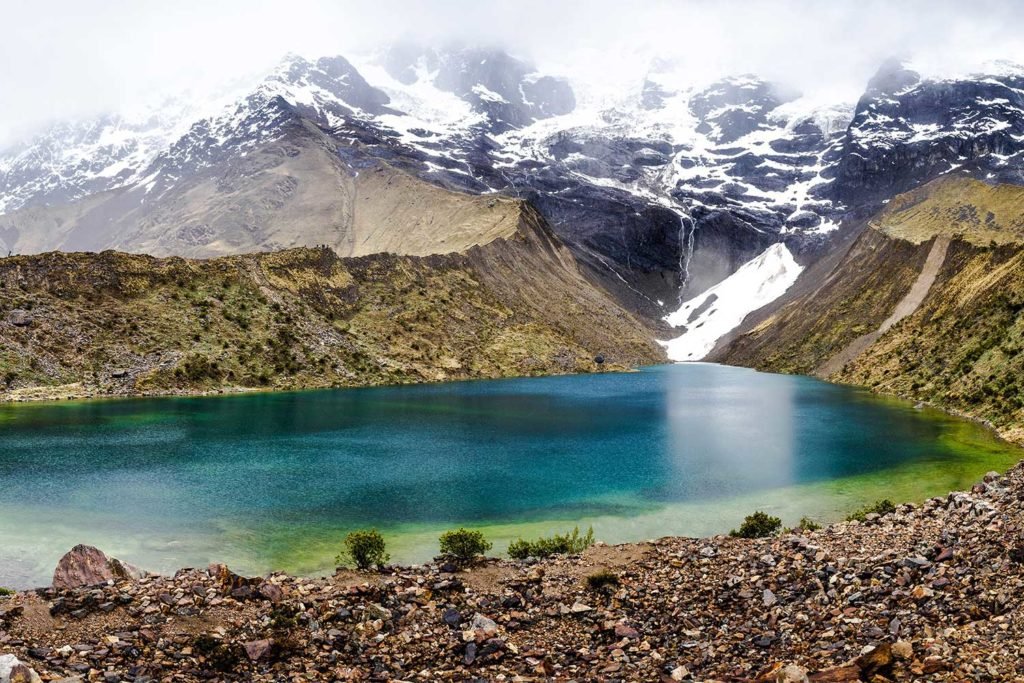South America, a continent rich in history and culture, is home to some of the world’s oldest and most mysterious civilizations. From the peaks of the Andes to the depths of the Amazon rainforest, you’ll encounter lost cities, majestic temples, and engineering marvels that have withstood the test of time. On this journey, we will explore two of the region’s brightest gems: Machu Picchu and Tiwanaku.
Machu Picchu: The Lost City of the Incas
Nestled among the Peruvian Andes, Machu Picchu is a testament to the ingenuity and spirituality of the Inca civilization. Discovered in 1911 by Hiram Bingham, this Inca city, built in the 15th century, remains an enigma to archaeologists.

The magic of Machu Picchu
Surrounded by towering, vegetation-covered mountains, Machu Picchu seems to float among the clouds. The agricultural terraces descending in perfect harmony with the terrain, the sun temples, and ceremonial spaces like the Intihuatana transport us to a time when nature and spirituality were deeply interconnected.
The Inca Trail
For adventure seekers, the Inca Trail is a one-of-a-kind experience. This hiking route, considered one of the most spectacular in the world, takes travelers through unforgettable landscapes and ancient ruins, culminating in the iconic citadel. Reaching Machu Picchu after several days of trekking is a triumph many describe as life-changing.
Myths and legends
The stories surrounding Machu Picchu add an air of mystery to its already impressive presence. From tales describing it as a refuge for the last Inca royal families to myths of hidden treasures, the lost city continues to spark the imagination of its visitors.
Tiwanaku: The City of the Gods
On the other side of the Andes, in Bolivia, lies Tiwanaku, an ancient pre-Columbian city that flourished between the 6th and 12th centuries AD. Considered one of the most advanced civilizations of its time, Tiwanaku left an impressive architectural and artistic legacy.
The Gate of the Sun
One of Tiwanaku’s most recognized icons is the Gate of the Sun, a monolithic stone structure carved with anthropomorphic and zoomorphic figures representing the cosmos according to Andean cosmology. Its exact meaning remains debated, but many believe it served as a ceremonial calendar.

The Akapana Pyramid
The monumental Akapana Pyramid is a fascinating structure notable for its complex engineering and possible ceremonial function. Built in several tiers, this pyramid was both a spiritual center and an astronomical observation site.
Tiwanaku calendar
The astronomical knowledge of the Tiwanaku civilization is evident in the alignment of its structures and intricate carvings. This mastery of astronomy allowed them to measure time with precision and plan agricultural and ceremonial activities.

Comparing Machu Picchu and Tiwanaku
Though separated by centuries and geography, these two cities share and contrast elements that help us understand the cultures that built them.
Similarities
Both cities reflect a deep connection with nature and exceptional stonework skills. On the journey from Machu Picchu to Tiwanaku, you can appreciate their urban planning and spiritual focus as common features. Machu Picchu and Tiwanaku were both key political and religious centers in their respective eras.
Differences
While Machu Picchu sits high in the Peruvian Andes, surrounded by lush green mountains, Tiwanaku is located on the high-altitude plains of Bolivia. They also differ in chronology, with Tiwanaku predating Machu Picchu by several centuries. Architecturally, Tiwanaku is more geometric and monumental, while Machu Picchu stands out for its seamless integration with the natural environment.
Machu Picchu and Tiwanaku are just two examples of South America’s rich cultural heritage. These ancient cities invite us to reflect on the past and marvel at human creativity. Taking a journey from Machu Picchu to Tiwanaku is a unique experience that transforms and enriches the soul, connecting us to the wonders of history and nature.
Frequently Asked Questions

1. When is the best time to visit?
The best time to visit is during the dry season, from May to October, when rainfall is minimal, and the weather is more stable—perfect for outdoor activities and visiting archaeological sites. While November marks the beginning of the rainy season, it can still be an option if you prefer fewer tourists and lower prices, though some rainfall is likely.
2. How much time do I need?
For Machu Picchu, at least a full day. Tiwanaku can be visited in a day.
3. Do I need a tour?
It’s not mandatory, but a tour provides specialized guides and better organization.
4. What’s the altitude?
- Machu Picchu: 2,430 m (7,972 ft).
- Tiwanaku: 3,840 m (12,598 ft).
5. What should I bring?
Warm clothing, a rain jacket, sunscreen, a hat, water, and your passport.
6. Can I camp?
Camping is not allowed at Machu Picchu, but there are options in Aguas Calientes. In Tiwanaku, you can inquire about local options.

If you’re looking for a trip that combines adventure, history, and deep immersion into the roots of South America, this journey will be a unique experience. Would you like a personalized experience exploring Machu Picchu and Tiwanaku? Look no further! Lorenzo Expeditions is your best choice. With years of experience in the region and a team of expert guides in archaeology and history, we offer tailor-made itineraries to make your trip truly special. Our attention to detail and commitment to quality will make your adventure unforgettable. Book now with Lorenzo Expeditions and experience the magic of the Andes like never before!





